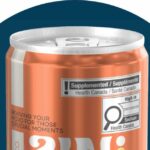Safe Food for Canadians Act
By: Joanna Chudyk, SENIOR REGULATORY AFFAIRS SPECIALIST, email
The Safe Food for Canadians Act and Regulations were implemented on January 15, 2019, introducing a new era of food safety standards in Canada. Led by the Canadian Food Inspection Agency (CFIA), this federal legislation applies to imported, exported, and inter-provincially traded foods in Canada, revolutionizing risk management practices and aligning with the HACCP (Hazard Analysis Critical Control Point) systems employed in the United States and internationally recognized standards such as Codex Alimentarius.
Within this extensive regulatory structure, certain activities will require mandatory licensing for select businesses, superseding the current registered establishment procedure. Obtaining a Safe Food for Canadians licence enables a food business to conduct specified activities outlined in the licence, facilitating direct communication between them and the CFIA.
In this article, we summarize what you need to know about obtaining a Safe Food for Canadians licence and provide an overview of the CFIA and Safe Food for Canadians Regulations.
Canadian Food Inspection Agency (CFIA)
The CFIA plays a crucial role in safeguarding Canada’s food supply and protecting human health of consumers. As the primary regulatory authority, the CFIA oversees various aspects of food safety, including inspection, compliance, and enforcement of regulations. CFIA regulates food in a post-market approach, surveilling and testing foods in the Canadian market, improving food safety and ensuring safe human consumption.
Its functions encompass monitoring food production, distribution, and importation to ensure adherence to quality and safety standards. Through inspection programs, laboratory testing, and risk assessments, the CFIA works to prevent foodborne illnesses, maintain public trust, and promote the integrity of Canada’s food system, ultimately preventing the possibility of unsafe food products entering the market. In instances where a food product is not compliant, CFIA has the authority to take enforcement actions, which include fines and confiscations of non-compliant products.
The primary goal of the CFIA is to confirm the adherence of food products entering the market to regulatory standards outlined in the Safe Food for Canadians Act and other pertinent documents like the Food and Drugs Act and the Safe Food for Canadians Regulations. To protect consumers, CFIA must verify compliance of domestic and importer products at various stages of production.
Responsibilities of Food Businesses
The Safe Food for Canadians Act requires that food businesses obtain a Safe Food for Canadians licence for their operations and guarantee the safety and compliance of domestically prepared, imported, or exported food products. Additionally, they must ensure that their food items adhere to compositional and grade standards, and that their labelling, advertisements, and presentation are accurate and compliant with applicable regulations, avoiding any false or misleading product representations.
Ensuring food product safety includes compliance with the Food and Drugs Act, the Food and Drug Regulations, the Safe Food for Canadians Act, and the Safe Food for Canadians Regulations. Lastly, other provincial regulatory requirements might also apply, and are a responsibility of food businesses to comply with.
Scope of Activities Requiring a Safe Food for Canadians Licence
Below is a list of activity examples outlined in the Safe Food for Canadians Act which require a food business to obtain a Safe Food for Canadians Licence:
- Manufacturing, processing, treating, grading, preserving, packaging, and labeling food for export or interprovincial trade;
- Exporting food products necessitating an export certificate;
- Dairy products, eggs, fish, fresh fruit or vegetables, honey, maple products, meat products, processed egg products, and processed fruit or vegetable products that require a licence on a provincial/territorial level;
- Storing or handling imported meat subject to inspection; and
- Importing food (excluding businesses whose sole activity is performing customs clearance as an import customs broker).
When applying for a Safe Food for Canadians licence, it’s crucial to consider food commodities and commodity-specific requirements for various food categories. Applicants must identify the specific commodities they deal with and any related sub-categories. For instance, companies specializing in milk products would select the dairy commodity on their application form, encompassing milk and its derivatives or products containing milk-based ingredients. New product categories must be added to the licence if they are not included in the overarching food commodities already listed.
Determine if your business requires a Safe Food for Canadians licence by using the Licensing Interactive Tool provided by Health Canada.
Obtaining a Safe Food for Canadians Licence
To obtain, renew, or modify your Safe Food for Canadians licence, you must submit a complete and accurate application to the Canadian Food Inspection Agency (CFIA) for review and approval. Alongside the application form, you must propose at least one work shift for each establishment where specific activities, such as slaughtering food animals or processing meat products, are conducted. Exceptions apply for certain meat products.
In addition to the submission of a licence application, applicants must establish Preventive Controls, Preventive Control Plans (PCPs), and Product Traceability to ensure and demonstrate food safety.
Preventive Controls and Preventive Control Plans
Preventive Controls encompass measures implemented to manage food-related risks and ensure the humane treatment of animals during slaughtering activities. These controls are mandated for both holders of Safe Food for Canadians licences and entities engaged in product-related operations. For example, a Canadian company possessing a Safe Food for Canadians licence for honey importation must establish preventive controls for the product and associated activities. Similarly, beekeepers, manufacturers, packagers, and labelers involved in the product’s lifecycle must establish preventive controls, even without holding a Safe Food for Canadians licence. In such cases, the importer bears the responsibility of ensuring necessary controls are in place at each stage of product handling.
Guidance on determining appropriate preventive controls can be found in the Codex Alimentarius General Principles of Food Hygiene.
In contrast, Preventive Control Plans are comprehensive documents delineating the identification and management of risks to food and food animals. Food businesses are obligated to create, maintain, and uphold written Preventive Control Plans to safeguard food safety.
The following components should be considered in when determining Preventative Controls:
- Interoperation and application
- Biological, chemical, and physical hazards
- Treatments and Processes
- Maintenance and Operation of Establishment
- Responsibility of Operator
- Sanitation, Pest Control, and Non-Food Agents
- Conveyances and Equipment
- Conditions Respecting Establishments
- Unloading, Loading, and Storing
- Competency
- Hygiene
- Investigation, Notification, Complaints, and Recall
- Preventative Control Plan
Health Canada offers numerous resources to assist food businesses, including templates for Preventive Control Plans tailored to specific activities. For further information, please refer to the guidance document on Preventive Control Plans.
Food Traceability Requirements
Food handlers are responsible for establishing traceability requirements for food products to ensure food safety, encompassing both forward and backward tracing. A food traceability plan must align with the guidelines set forth by the Codex Alimentarius.
Steps to Obtain a Safe Food for Canadians Licence
- Create a My CFIA account and set up your profile.
- Determine the licences required and the optimal licence structure for your business. While applicants can hold multiple licences, they must ensure compliance with all requirements for each licence category and associated activities. For instance, businesses may opt for a licence covering a specific activity or a food commodity, encompassing all related activities.
- Complete the licence application. Once you’ve identified the suitable licence structure, fill out the application, ensuring inclusion of all activities, locations, and food commodities. Additionally, you must confirm compliance with all Safe Food for Canadians Regulations.
- Receive your Safe Food for Canadians Licence. Upon submission of your application and payment of applicable fees, you’ll receive a notification containing your licence, or you may be informed that further business inspection is required before issuance of the licence.
For detailed information on the Safe Food for Canadians licensing process and associated fees, it is recommended to consult Health Canada’s “What to Consider Before Applying for a Safe Food for Canadians Licence” guide.
Requirements for Importers
As with domestic manufacturing of foods, the Safe Food for Canadians Act and Safe Food for Canadians Regulations mandate that importers must obtain a site licence prior to food’s import. Importers must ensure that category-specific food commodities are included on their licence and that the product and site related information is properly declared on their import declarations. Invalid declarations or declarations with expired Safe Food for Canadians licences will result in a denial of entry and a refusal of the food shipment.
Importers should submit their import declarations as early as possible to ensure that their documents are ready for the product’s import. Importers can submit filled out import declarations up to 90 days prior to their shipment arriving at the border.
As a part of the Safe Food for Canadians Licence, importers should also establish Preventive Controls, Preventive Control Plans, and Traceability Plans (described above ) for the product they are importing. These plans should also include information on:
- Assessment of supplier adherence to HACCP principles and good manufacturing practices;
- Identification and management of food-related hazards; and
- Strategy for meeting Canadian regulatory standards.
How Dell Tech Can Help with Food Safety Compliance
Looking to streamline your journey through Canada’s food safety system while securing essential registrations and ensuring compliance? Look no further than Dell Tech. Our comprehensive support services are designed to guide you effortlessly through the process, making your path to regulatory success smoother and more efficient.
Dell Tech has provided professional, confidential consulting services to the specialty chemical
industry in Canada, the USA, Europe, and Asia for the last 40 years.
Talk to our team about how we can benefit your business today!





